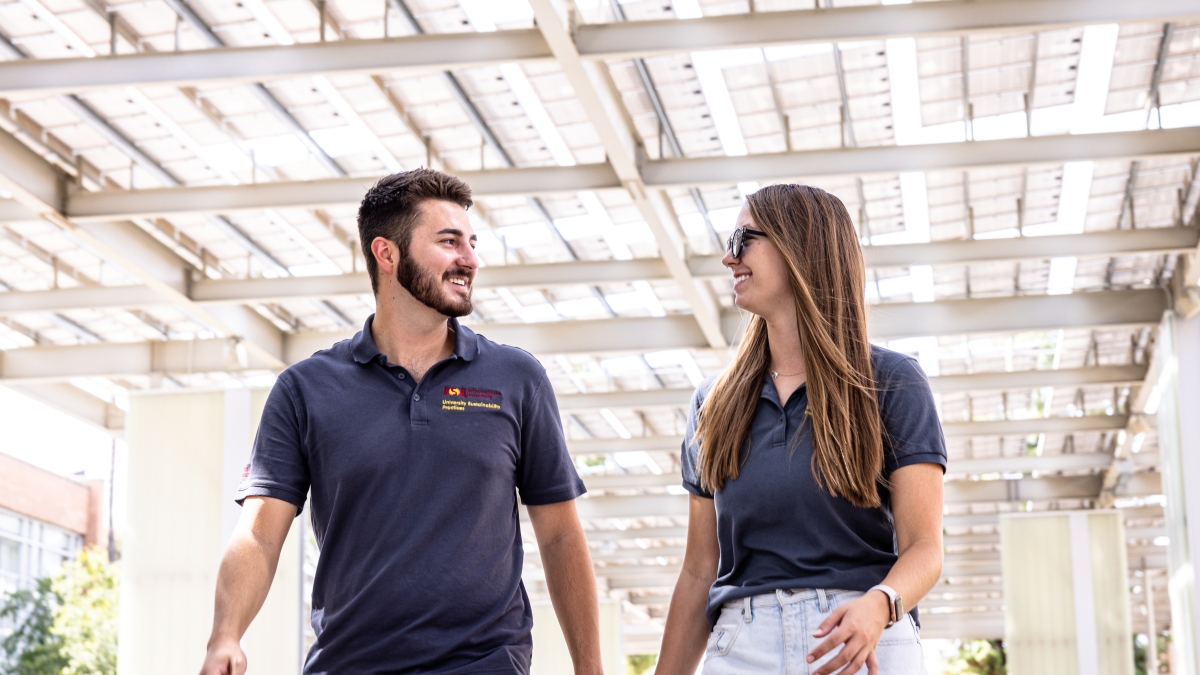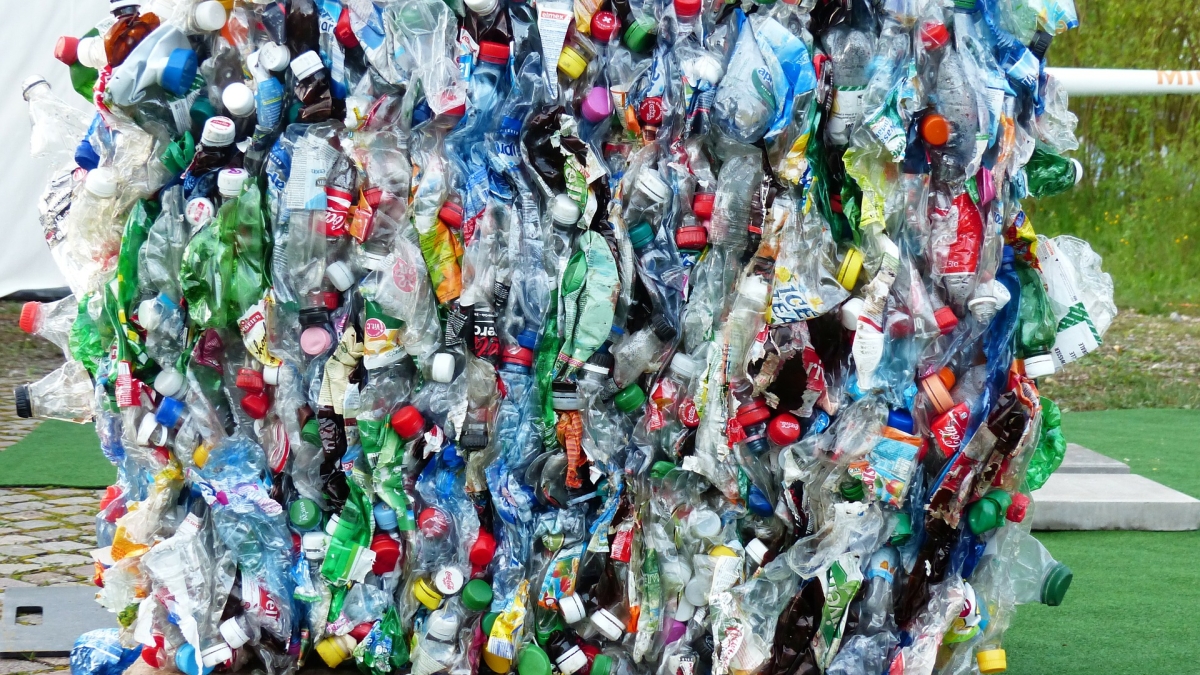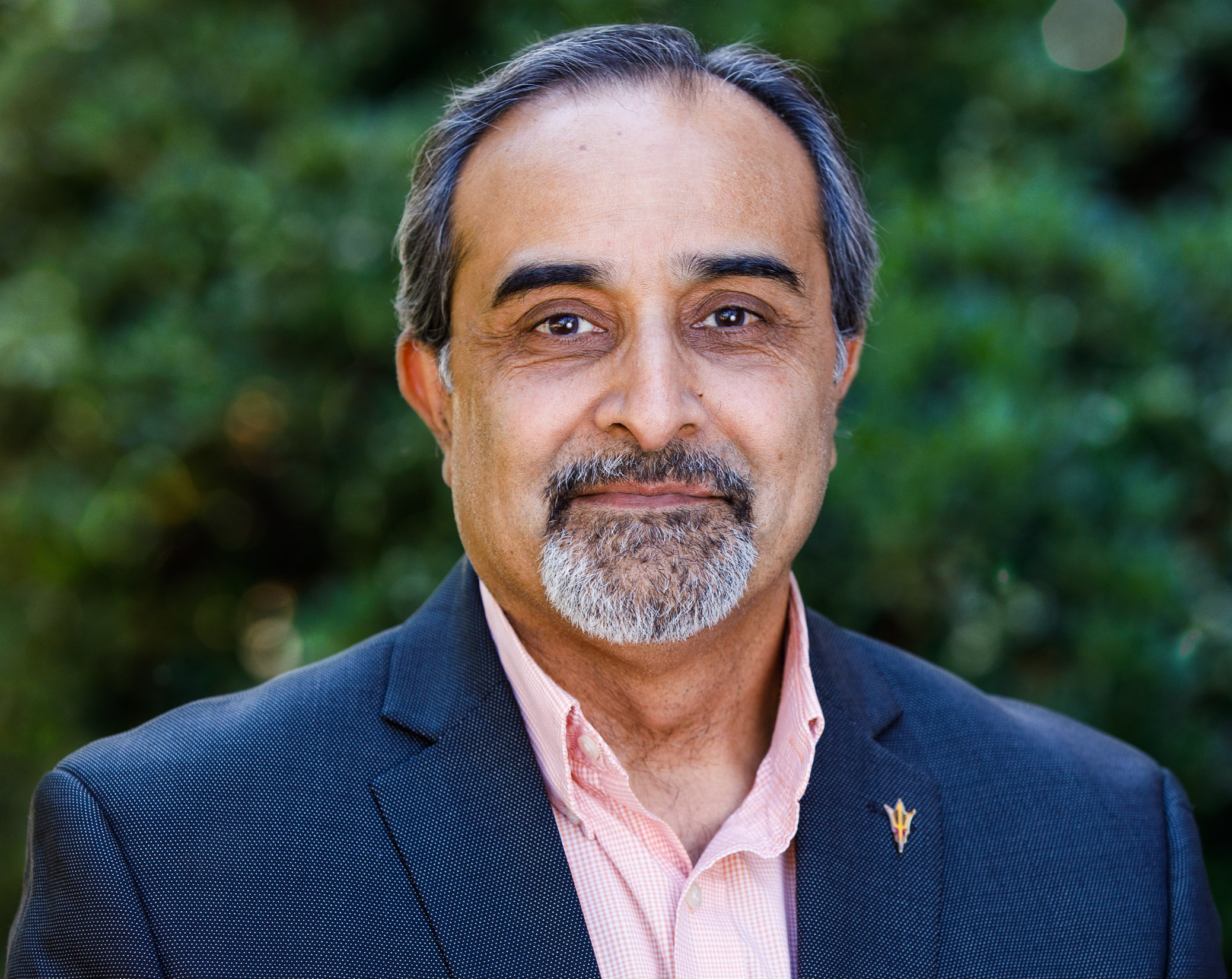Arizona municipalities and cities across America are dropping popular recycling programs or scaling them back drastically ever since China decided last year to limit reusable materials it would accept from the United States.
China has stated that their recycling facilities became overwhelmed and their oceans were getting polluted. They also wanted to focus on their country’s own sustainable needs.
The move has forced several Arizona cities such as Mesa, Tucson, Surprise, Casa Grande, Sierra Vista and Globe to reduce or eliminate their recycling programs.
Rajesh Buch, a senior sustainability scientist with the Julie Ann Wrigley Global Institute of Sustainability and director of the Rob and Melani Walton Sustainability Solutions Service, said Americans will have to rethink how they dispose of their garbage if they want recycling programs to continue.
He recently spoke with ASU Now on this issue, offering insights, helpful tips and long-term solutions on sustainable recycling.
Rajesh Buch
Question: Given that recycling is positive and something we can all do to help the planet, why are municipalities starting to drop recycling programs?
Answer: Recycling has been available to most Americans for decades. Without recycling we would have more waste going to landfills or being incinerated — as is common practice in many countries — increasing the potential for water pollution, impacting the climate or producing toxic emissions.
Until 2018, many countries — including the United States — were sending their plastic waste to China. The recycling industry was financially viable as these high-value plastics were sold and actually provided revenue to public and private waste haulers, to cover the costs of operating their recycling collection and processing systems. In 2018, China stopped importing plastic waste, which effectively shut down the market for these materials, as there was no other revenue-generating alternative in the U.S. or other countries. With no other outlet for plastics, many cities and urban areas around the U.S. have or are considering stopping curbside pickup or closing recycling centers simply to reduce operating costs. In places where recycling service has been stopped, most of the waste ends up in landfills.
Q: Does this mean that the world will produce less plastics?
A: The value of plastic comes from its durability, versatility, reliability and, of course, its low cost. It is in, on or with practically everything we do, and it’s everywhere. With the world’s population growing and rapidly urbanizing, the demand for plastics will only increase. Our response needs to be how we more effectively collect, process and reuse plastic materials, so that it doesn’t end up in landfills, the oceans and waterways — it is estimated that there is more plastic in the oceans of the world than fish — or in the atmosphere: Yes, we’re all actually inhaling microplastics. Also, we need to introduce more environmentally friendly materials, bioplastics, to substitute fossil-fuel-based plastics where possible.
Q: Let’s talk money: It has been said that recycling programs are expensive, and that's the reason many municipalities have chosen to discontinue them.
A: There are several aspects to the business side of recycling. First of all, in most of the U.S. landfilling is cheaper than recycling, because land is cheap, and landfilling as a process is not as expensive — all of our waste is in a single stream, and gets buried. Recycling, on the other hand, is more complex, requires capital-intensive processing systems to separate the different materials — plastics, paper, metals etc. — and its output — postconsumer recycled plastics — are not in high-enough demand. Because the demand for postconsumer recycled plastics is low, its price is also relatively low, keeping virgin plastics just as attractive. Further complicating all of this is the fact that recycling is not consistent in different municipalities — what goes in the blue bin in one place is considered contamination elsewhere.
Q: What are some short- and long-term solutions that you can foresee with this issue?
A: There are several solutions. First, we could reduce the amount of “stuff” we all purchase — that’s the best way to reduce the amount of waste we all produce. Then let’s reuse as much of the products we purchase for as long as possible. And then, become familiar with our local recycling options so that almost everything that is discarded gets recycled. In the medium term, companies could start demanding more postconsumer recycled plastic content and also take responsibility for product and packaging take-back programs to ensure that all these materials are returned to valuable use. The ideal long-term solution is the concept of “circular economy.” The “take-make-waste” economy is called the linear economy. Circular economy is a sustainability concept that has been around for decades in different forms, but the idea is to maximize the reusing and repurposing of materials to their maximum value for as long as possible.
Top photo: A pallet of plastics to be recycled. Courtesy of Pixabay
More Environment and sustainability

Charles Redman, founder of the School of Sustainability, faces a new adventure: Retirement
At the retirement celebration for Charles Redman on Oct. 22, two messages persisted: Redman’s contributions to Arizona State University helped to shape the interdisciplinary efforts we now find…

10 climate insights to guide our future
A group of globally renowned social, natural and climate scientists has once again convened to offer their newest annual synthesis report, “10 New Insights in Climate Science.”The report, published…

The future is green: Job demand translates to high employability for ASU sustainability grads
A 2023 report by Forbes on the state of green jobs confirmed what Arizona State University has been trumpeting for years: Sustainability will play a large part in the new economy.The report suggests…

